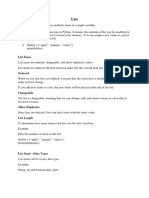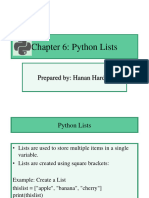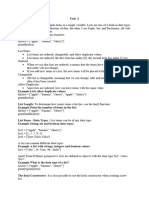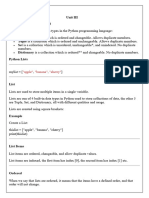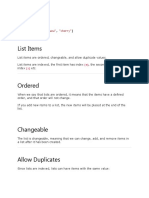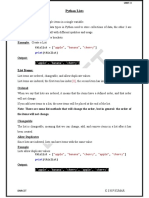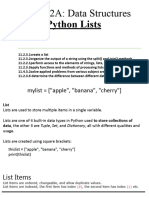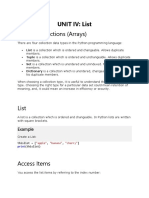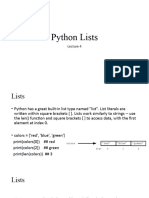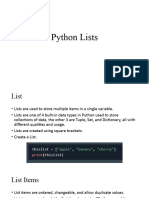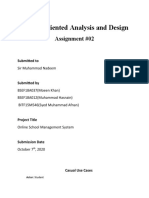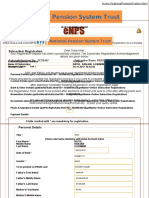0% found this document useful (0 votes)
30 views18 pagesList Notes
The document provides a comprehensive overview of lists in Python, detailing their characteristics such as being ordered, changeable, and allowing duplicates. It covers various operations including creating, accessing, modifying, and looping through lists, as well as methods for adding and removing items. Additionally, it discusses list comprehension and sorting techniques, along with copying lists.
Uploaded by
rohit.g.official1Copyright
© © All Rights Reserved
We take content rights seriously. If you suspect this is your content, claim it here.
Available Formats
Download as DOCX, PDF, TXT or read online on Scribd
0% found this document useful (0 votes)
30 views18 pagesList Notes
The document provides a comprehensive overview of lists in Python, detailing their characteristics such as being ordered, changeable, and allowing duplicates. It covers various operations including creating, accessing, modifying, and looping through lists, as well as methods for adding and removing items. Additionally, it discusses list comprehension and sorting techniques, along with copying lists.
Uploaded by
rohit.g.official1Copyright
© © All Rights Reserved
We take content rights seriously. If you suspect this is your content, claim it here.
Available Formats
Download as DOCX, PDF, TXT or read online on Scribd
/ 18






